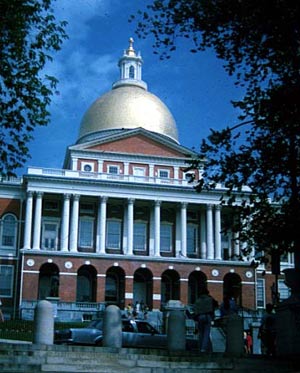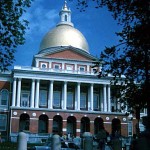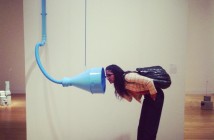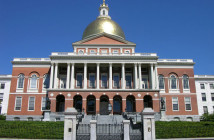The revolution will not be televised
Part One- the Creative Economy and Cultural Development
Addressing creative economy & tourism issues
What the foundation of creative economy is and what communities have been left out of the discussion.
One of our key goals of the Creative Alliance*, founded by the Artists Foundation as an on line project that is non partisan and is dedicated to empowering artists to become part of the public policy dialogue on issues that directly impact their livelihoods, is to enlighten policy makers and elected officials to what is the foundation of the creative economy. The untold story is that artists’ unpaid or underpaid labor are what support the creative economy and allow it to grow. The majority of the studies of the creative economy don’t take this into account. NOR do the so called arts policy makers acknowledge this fact. In the present day labor structure of the art world, living/contemporary artists of all disciplines-- with the exception of the few who have become "stars" -- can not earn a living from their work as artists and must have supplementary jobs to supply their income. Contrary to popular beliefs, the majority of artists do not receive grants-- public or private-- and the bulk of artists do not get paid adequately, if at all, for their creative work. The majority of artists must finance their art work with the income earned from their supplementary job(s). Many artists work part-time in order to have the time and flexibility they need to create their work. Often times, artists hold multiple part-time jobs to make ends meet. The majority of these jobs do not offer health insurance.
For example, artists do not get paid for participating in Open Studios events, in fact they have to pay fees to participate in them (some as high as $100). Seldom do artists earn moneys from exhibiting their work in non profit spaces. If there is a stipend offered it rarely covers the costs incurred by the artist to fabricate or even frame their work. Nor does it cover the full cost of producing the art and the time the artists must take off from their supplementary jobs to prepare and install the work. Although the current state and local arts grants programs are important, most artists do not receive grants to support their work. What funds most of the artists? Their own money and/or credit cards.
Nor do the studies take into account the commercial art gallery sector. The commercial galleries are usually left out of any dialog on art policies and are not supported/promoted in anyway by arts councils. Commercial galleries are one way that artists can earn income. The actual buying of art needs to be promoted. They are important small businesses/micro businesses. Museums although important, do not promote the purchasing of art made by living artists. Tourists should also be directed to the commercial galleries by tourism initiatives and arts councils.
Also missing from this picture are the grass roots, alternative spaces, and artist run spaces and what they contribute. Many of these organizations do not receive public funding of any kind, yet do incredible and important community based programming (Transcultural Exchange, Studio Soto, the South Boston Arts Association, AXIOM, Artspace@16 in Malden to name a few). Yes these organizations and artists for that matter, are hard to find and quantify, but that is no excuse not to create methods to do so. It is essential that when the arts are promoted on local, state and national levels that artists, the commercial sector, as well as the grassroots/alternative/artists run organizations are acknowledged, promoted and supported. Who is not at the table is just as important as who is.
Even though artists are the creative energy supporting the culture industry, they are poorly paid and must supply their incomes by supplementary jobs. Often times, these jobs do not provide health care coverage. In essence, there is a dual labor market structure in the art world that profits from poorly paid artists. The "high wage" sector of the art world is dominated by non-artists, while the "low wage" sector is reserved for artists. The cultural industry of the United states is dependent on the poorly paid artists, "In fact the largest subsidy to the cultural life of this country does not come from corporate donors, the government, or from the patrons but from artists-- through their unpaid or underpaid labor" [1]. Artists are the working poor of the art world and like most "under served" populations, their needs-- have been ignored not only by the so called main stream policy makers, but by the arts policy makers who say they represent them.
It clear that arts policy makers do not have artists’ interests at the forefront of their agenda, if they did I would not be writing this column. If artists don’t speak up for their interest, no one will.
Yours in the revolution.......
The Artists Foundation/Creative Alliance has launched two campaigns to help address these issues:
Become a Citizen Artist!
A statewide campaign to empower artists to become more involved with their elected officials, and with public policy, legislative, and community issues that directly impact their livelihoods.
Created in Massachusetts
A statewide initiative to promote the following: the buying of contemporary art and crafts created in Massachusetts, the purchase of publications by Massachusetts authors and poets, and to promote attendance of performance based-work (dance, theater, spoken word, performance art), art events, and/or film-based works/screenings created by Massachusetts Artists.
[1] -WOODCOCK, George. Strange Bedfellows- The State and The Arts in Canada. Vancouver: Douglas & McIntyre 1985.
*The Creative Alliance, founded by the Artists Foundation, is an on line project that is non partisan and is dedicated to empowering artists to become part of the public policy dialogue on issues that directly impact their livelihoods. The Creative Alliance (CA) also works to educate policy makers and advocacy groups on the unique needs of the artist community. The Creative Alliance does not endorse political candidates for office or political parties. By joining the Artists Foundation list serve you will be alerted to legislation, initiatives, policy models, and other organizations that are relevant to and are impacting working artists in Massachusetts and beyond. Join the AF list serve.




